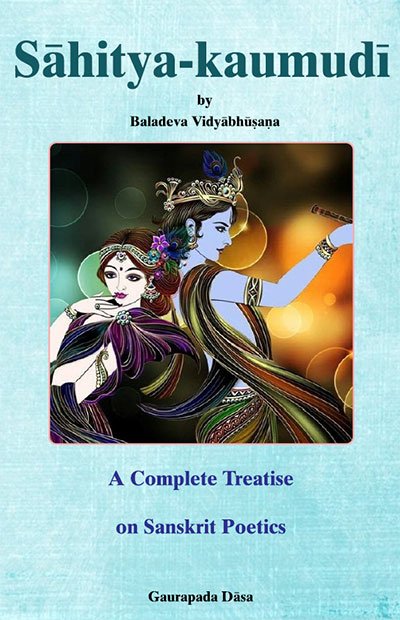Sahitya-kaumudi by Baladeva Vidyabhushana
by Gaurapada Dāsa | 2015 | 234,703 words
Baladeva Vidyabhusana’s Sahitya-kaumudi covers all aspects of poetical theory except the topic of dramaturgy. All the definitions of poetical concepts are taken from Mammata’s Kavya-prakasha, the most authoritative work on Sanskrit poetical rhetoric. Baladeva Vidyabhushana added the eleventh chapter, where he expounds additional ornaments from Visv...
Text 10.34
[This verse and the next illustrate hetu utprekṣā, imagining a cause:]
śyāmaḥ kaṭākṣa-nikṣepād gopīnāṃ nūnam acyutaḥ |
gopyaḥ pītāṃśuka-dhyānāt pītimānaṃ dhruvaṃ dadhuḥ ||
śyāmaḥ—darkish; kaṭākṣa—sidelong glances; nikṣepāt—because of casting (their eyes have eyeliner); gopīnām—done by the cowherd girls; nūnam—indeed (a term expressive of utprekṣā); acyutaḥ—Acyuta; gopyaḥ—the cowherd girls; pīta—yellow; aṃśuka—on the garment; dhyānāt—because of meditating; pītimānam—yellowness; dhruvam—certainly (a term expressive of utprekṣā); dadhuḥ—assumed.
Indeed, Acyuta is darkish because the gopīs cast sidelong glances. For sure, the gopīs assumed a yellowish color because they meditated on His yellow garment.
Commentary:
The verse features two hetu utprekṣās: the two clauses which begin with “because”. The first utprekṣā is expressed with the word nūnam (indeed) and the second one with the word dhruvam (for sure). All the words expressive of an utprekṣā are stated ahead (10.37 vṛtti).
